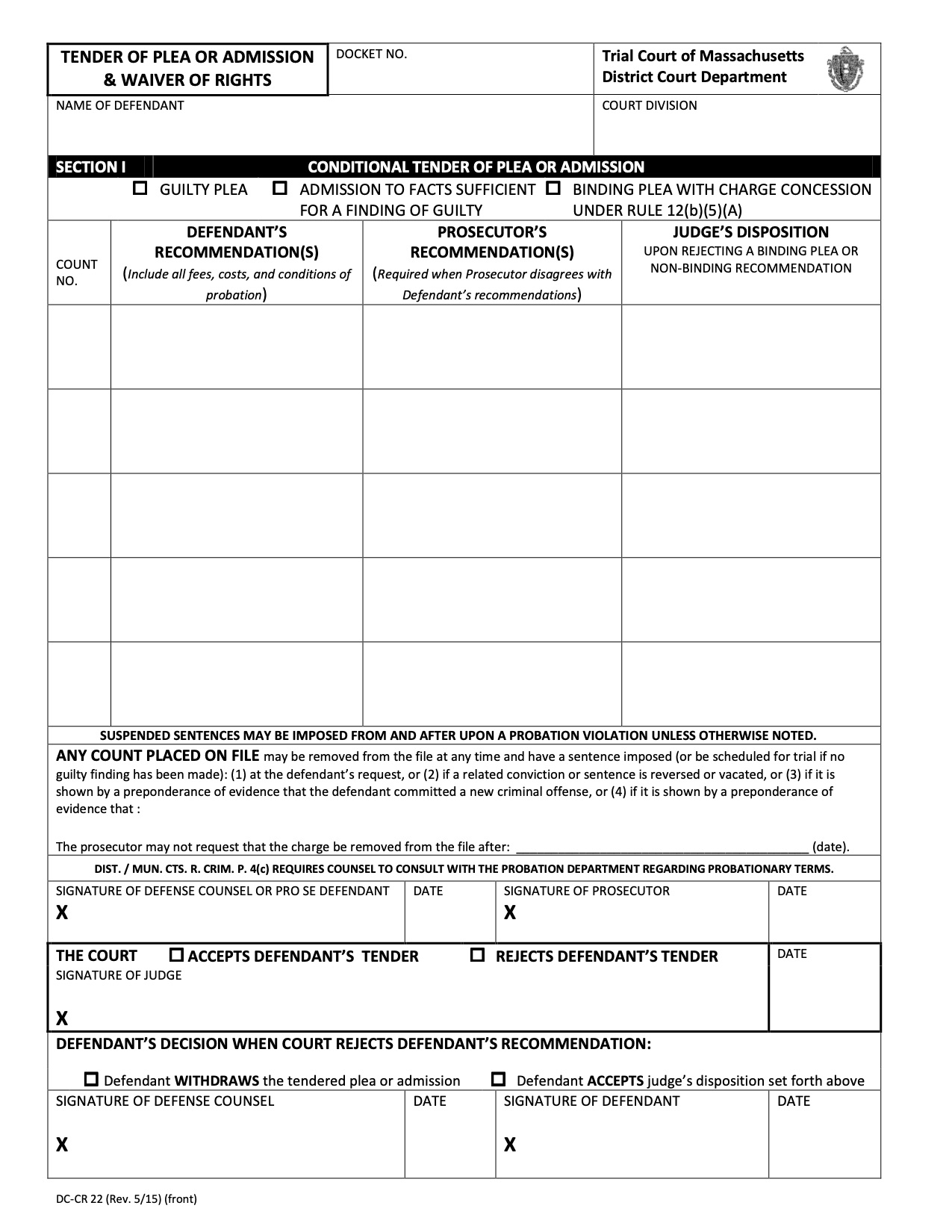Criminal cases are often resolved through plea deals. So how exactly do they work? Well, like most things in the court system, there is a form for it! Take a look at the attached image, which is the front page of the “Tender of Plea” sheet. Some lawyers refer to these as “green sheets,” as some courts print these forms on green paper, although many no longer do so.
The most important part of this form is found in Section I, the “Conditional Tender of Plea or Admission.” At the top of this section are three options, the first two being the most common, either a “Guilty Plea” or an “Admission to Facts Sufficient for a Finding of Guilty.” The latter is also known as a “Continuance Without a Finding” or CWOF (pronounced “quaff”). The difference between a guilty plea and a CWOF is that a CWOF will result in a period of probation; if that probation is successfully completed, the case will then be automatically dismissed.
A defendant can either plea guilty or admit to sufficient facts (CWOF). The defendant’s attorney will write the proposed terms of the plea in first column. These terms can include: incarceration for a period of time, a suspended sentence, probation, or other terms and conditions. The prosecutor will place his/her recommendation in the second column. If the prosecutor agrees with the defendant’s recommendation, the tender of plea is “agreed upon.” If the defense and the prosecutor have different recommendations, the tender of plea is “disparate.”
Regardless of whether the tender is agreed upon or disparate, the judge always has the opportunity to suggest a different sentence. That is where the third column comes in. If the judge rejects the defendant’s tender of plea, he/she can either adopt the prosecution’s recommendation or write his/her own proposed sentence in the third column. At this time, the Defendant has two options, either accept the judge’s disposition or withdraw the tender of plea.
When a plea is withdrawn, it can not be used against the Defendant in subsequent proceedings, such as at trial. A defendant has two bites at the apple when it comes to attempting a plea, first at any time during the pre-trial proceedings, and again on the date of trial. This second chance at a plea deal is done at a time when the defendant will be aware of which witnesses the Commonwealth has ready to testify at trial; this information may change the calculus behind any proposed plea.
I offer my clients passionate advocacy in all matters, including trials and plea negotiations.



